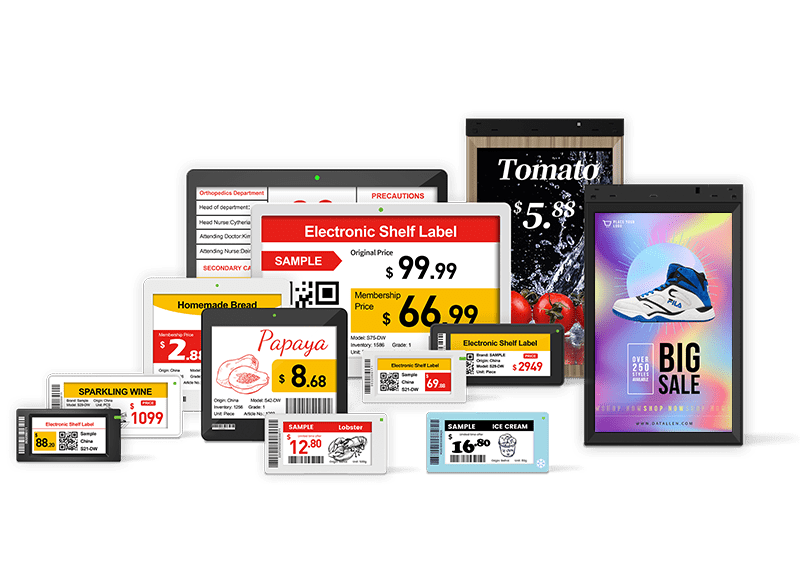In today’s digital business environment, terms like ERP and CRM often come up when companies plan for digital transformation. However, the difference between ERP and CRM can still be confusing for many. Both are powerful tools that drive business growth, but they focus on different aspects of operations. This article breaks down the ERP vs CRM debate in simple terms, helping businesses understand which solution — or combination of both — suits them best.
What Is a CRM System?
A Customer Relationship Management (CRM)system helps businesses manage all interactions with current and potential customers. It stores vital customer data, such as contact details, communication history, and purchasing preferences. A CRM aims to streamline how companies attract, engage, and retain customers.
In practical terms, CRM acts as the digital memory of your customer-facing teams. Every phone call, email, or inquiry is recorded and organized, so sales representatives and support agents can provide more personalized service. In an age where customer experience defines competitiveness, CRM systems have become the foundation of strong business-to-customer relationships.
Purpose of CRM System
The primary purpose of a CRM system is to improve relationships between a company and its customers. It does this by centralizing customer information and making it accessible across departments.
For instance, the marketing team can use CRM data to segment customers for more precise campaigns. Sales teams can track leads and close deals faster. Customer service teams can access past interactions to resolve issues efficiently.
In essence, a CRM bridges the gap between different customer-facing functions, allowing the company to deliver consistent and high-quality experiences at every touchpoint.
Benefits of CRM System
Adopting a CRM system offers numerous benefits, including:
Enhanced customer satisfaction: When customer data is easily accessible, support and service improve dramatically.
Higher sales conversion rates: CRMs allow tracking of each stage of the buyer journey, ensuring no opportunity is lost.
Better data-driven decisions: Real-time analytics offer valuable insights into customer behavior and sales trends.
Improved collaboration: With shared access to customer data, teams can work seamlessly across departments.
A well-implemented CRM not only boosts short-term performance but also builds long-term customer loyalty — a critical competitive advantage in any industry.
CRM System Cost
The cost of a CRM system depends on company size, required features, and deployment type. Cloud-based CRMs typically use a subscription model, which can range from $15 to $150 per user per month.
However, real-world costs often extend beyond the subscription price. Companies must account for:
Implementation and data migration: Transferring legacy data securely into the CRM system.
Customization: Adjusting dashboards, workflows, and reports to match internal processes.
Training: Ensuring that employees know how to use the system effectively.
Integration expenses: Connecting CRM to ERP, email marketing tools, or e-commerce platforms.
Maintenance and upgrades: Keeping the system secure and up to date.
The total cost of ownership (TCO) can vary significantly based on the level of sophistication. Small startups may begin with basic, low-cost CRMs, while enterprises often invest in full-featured systems with AI-driven analytics and omnichannel integrations.
To put this into perspective:
Small businesses can expect to spend $1,000–$5,000 annually.
Mid-sized businesses might range from $10,000–$50,000 annually.
Large enterprises could exceed $100,000 depending on scale and integrations.
When assessing cost, it’s essential to measure ROI in terms of improved sales productivity, customer retention, and reduced manual workload — not just the subscription fee itself.

CRM System Functions
A CRM system typically includes several key functions:
1. Contact Management– Centralized storage of customer information.
2. Sales Pipeline Tracking– Monitoring prospects through the stages of sales.
3. Marketing Automation– Running targeted campaigns and tracking engagement.
4. Customer Support Management– Ticket tracking, service requests, and feedback.
5. Analytics and Reporting– Turning data into actionable insights.
Modern CRMs increasingly integrate with e-commerce platforms, email marketing tools, and even physical in-store systems such as digital signage or electronic shelf labels. For example, Datallen’s digital signage can display dynamic promotions driven by CRM data, creating a seamless bridge between digital marketing and physical retail environments.
CRM System Integration
Integration is one of the most critical aspects of CRM success. Businesses often integrate CRM with email systems, ERP, e-commerce platforms, and other third-party applications.
When a CRM system communicates directly with an ERP platform, data flows freely between departments. Sales teams can instantly access stock levels, production schedules, and order statuses without switching tools. This integration improves accuracy and operational efficiency — essential for industries like retail, where real-time data drives fast decisions.
A well-integrated CRM ecosystem provides:
Single customer view: Every department accesses the same up-to-date data.
Automated workflows: Reducing human error and saving time.
Enhanced reporting: Merging sales, marketing, and finance data into unified analytics.
Personalized marketing:Triggering promotions based on purchase or behavior history.
In the digital retail context, CRM-ERP integration can even synchronize with IoT-based in-store systemslike digital price tags, allowing businesses to dynamically adjust pricing or display targeted offers in real time. For growing organizations, integration is no longer optional — it’s the key to scalability and sustainable digital transformation.
Types of CRM Systems
There are three main types of CRM systems:
1. Operational CRM: Focuses on automating sales, marketing, and customer service tasks. Examples include automated follow-ups, lead nurturing, and support ticket management.
2. Analytical CRM: Emphasizes data analysis to understand customer trends, identify high-value clients, and forecast future behaviors. Often integrated with BI (Business Intelligence) tools.
3. Collaborative CRM: Enhances communication between internal departments and external partners or distributors, ensuring that every stakeholder has access to relevant customer information.
In recent years, hybrid and AI-powered CRM systems have emerged. These platforms combine automation, analytics, and predictive modeling, providing businesses with proactive insights — such as which customers are likely to churn or which product lines need more attention.
For example, in e-commerce CRM systems, analytics-driven CRMs can automatically suggest upselling opportunities, while operational modules handle customer support tickets in real time. The flexibility to mix these CRM types allows businesses to adapt their strategies as they grow.
CRM vs ERP System
While CRM focuses on managing external relationships, ERP (Enterprise Resource Planning)systems handle internal processes such as finance, HR, and supply chain management. The difference between ERP and CRM lies in their purpose — CRM looks outward to customers, while ERP looks inward to resources.
Visualizing the Difference: A Comparative Table
Aspect | CRM | ERP |
Primary Focus | External customer-facing processes | Internal resource management |
Main Users | Sales, marketing, and customer service teams | Finance, operations, HR, supply chain |
Key Benefits | Improved customer satisfaction, increased sales, and better customer retention | Reduced operational costs, improved efficiency, and better resource planning |
Data Emphasis | Customer interactions, sales opportunities, service requests | Financial data, inventory levels, production schedules |
Implementation Scope | Departmental (often expanding organization-wide) | Enterprise-wide from inception |
ERP and CRM Applications
1.1 The Standalone Approach: Separate Systems with Manual Bridges
Many small and mid-sized businesses start with separate systems — a CRM for managing customers and spreadsheets or basic accounting tools for operations. While this setup works initially, it quickly creates inefficiencies:
Data duplication: Employees must re-enter information manually between systems.
Inconsistent reporting: Misaligned data between sales and operations.
Process delays: Manual handoffs increase errors and waste time.
Studies show that businesses using disconnected systems spend about 15% more time on reconciliation tasks and face 20% higher order-processing error rates.
1.2 The Integrated Solution: Best of Both Worlds
Modern business practices now favor integrated ERP-CRM platforms. These solutions share a unified database, improving visibility and performance across the organization:
Unified customer view: Sales history from CRM connects to order and payment data in ERP.
Streamlined processes: Automation links sales, inventory, and finance workflows.
Consistent reporting: A single source of truth for performance metrics.
For businesses in retail technology — like those using Datallen’s electronic shelf labels and digital signage— ERP-CRM integration provides real-time alignment between sales data, stock levels, and customer engagement strategies. For instance, marketing can instantly adjust promotions displayed on digital screens based on product availability, ensuring both efficiency and customer satisfaction.
1.3 Key Integration Points
Critical integration points between ERP and CRM systems include:
Customer data synchronization for consistency.
Order-to-cash workflow automation.
Real-time inventory visibility for accurate delivery timelines.
Unified customer service portals with access to order histories.

How to Choose a CRM System
Choosing the right CRM system requires balancing functionality, scalability, and budget. Before making a decision, businesses should conduct an internal audit of their processes to determine what problems they need to solve.
Key considerations include:
Industry-specific features: Some CRMs are tailored for manufacturing, retail, or service industries.
Integration capabilities: Ensure compatibility with ERP, accounting, or e-commerce tools.
Scalability: Choose a solution that grows with your business without major reinvestment.
Ease of use: A simple, intuitive interface improves adoption rates among employees.
Mobile accessibility: Modern CRMs should support remote work and mobile access.
Data security and compliance: Especially important in industries handling customer-sensitive information.
Vendor reliability: Look for proven vendors with strong support and upgrade roadmaps.
Companies should also test systems through free trials or pilot programs. Real-world testing reveals user experience, data flow, and reporting effectiveness far better than brochures or demos alone.
Is SAP a CRM System?
SAP is best known for its ERP software, but it also offers a comprehensive CRM module. SAP’s CRM solutions integrate tightly with its ERP system, providing end-to-end visibility from lead generation to product delivery.
SAP CRM supports multiple functions, including sales automation, marketing campaigns, and customer analytics. It allows large enterprises to align customer engagement with resource planning seamlessly. However, SAP’s solutions are typically best suited for medium to large businesses with complex operational needs and dedicated IT support.
For smaller companies, SAP may be too resource-intensive; lighter cloud CRM alternatives like HubSpot or Zoho CRM can offer more agility and affordability. In essence, SAP CRM demonstrates how a CRM and ERP system can coexist under one ecosystem — a model many vendors now emulate.
Small Business CRM Systems
For small businesses, adopting a CRM might seem like a big step, but modern cloud-based systems make it accessible. They provide essential features such as lead tracking, email integration, and customer support at affordable costs.
Smaller firms benefit immensely from CRM systems because they enable structure and professionalism without high overhead. They also lay the foundation for future ERP integration once the business expands — ensuring a smooth transition toward digital maturity.
ERP vs CRM: When Does a Business Need Both?
Most growing companies eventually find that using either ERP or CRM alone is not enough. Common warning signs include:
Excessive manual data entry between departments.
Difficulty creating accurate business performance reports.
Sales and operations teams are using conflicting data.
Missed opportunities due to a lack of real-time visibility.
Challenges scaling processes as the business grows.
When these issues appear, integrating ERP and CRM systems is not just an upgrade — it’s a necessity for sustainable growth.
Vendor Selection Criteria
When evaluating ERP or CRM vendors, consider the following:
Industry expertise: Vendors with experience in your sector understand operational nuances.
Integration readiness: Look for APIs and connectors for ERP, e-commerce, and marketing systems.
Customization flexibility: The ability to tailor workflows, reports, and dashboards.
Scalability: Ensure the system can handle future growth in users and data volume.
Mobile and cloud support: Remote access and real-time updates enhance efficiency.
Training and after-sales service: Comprehensive onboarding ensures long-term adoption success.
Cost transparency: Evaluate both upfront and recurring costs, including maintenance and updates.
When possible, select vendors offering proof-of-concept implementations. This lets you experience how data flows, integrates, and performs in real business scenarios before full-scale rollout.
Conclusion
In the debate of ERP vs CRM, the right answer isn’t always one or the other — it’s often both. CRM systems empower companies to understand and serve customers better, while ERP systems ensure efficient resource use and accurate financial management.
The integration of these systems represents the next step in business digitalization — connecting front-end engagement with back-end control. For industries like retail, where real-time insights can influence both customer experience and profit margins, this connection is transformative.
Whether you’re a startup exploring your first CRM or a large enterprise optimizing ERP operations, the goal remains the same: build a smarter, more connected, and customer-centric business.
For more insights, check out:
1. Pricing Intelligence for Retailers: Strategies, Tools, and Real-World Applications
2. The Importance of Digital Transformation in the Retail Industry
3. POP Marketing Mastery: How Point of Purchase Materials in Retail Drives Sales
4. POS Systems Demystified: Types, Costs, and Implementation Insights
5. Are Self Checkout Systems Worth the Investment? Breaking Down Costs, Security & E-shelf Labels
6. Datallen | Essential Tools for Modern Retailers: The Synergy Between POS Systems and Electronic Pric









